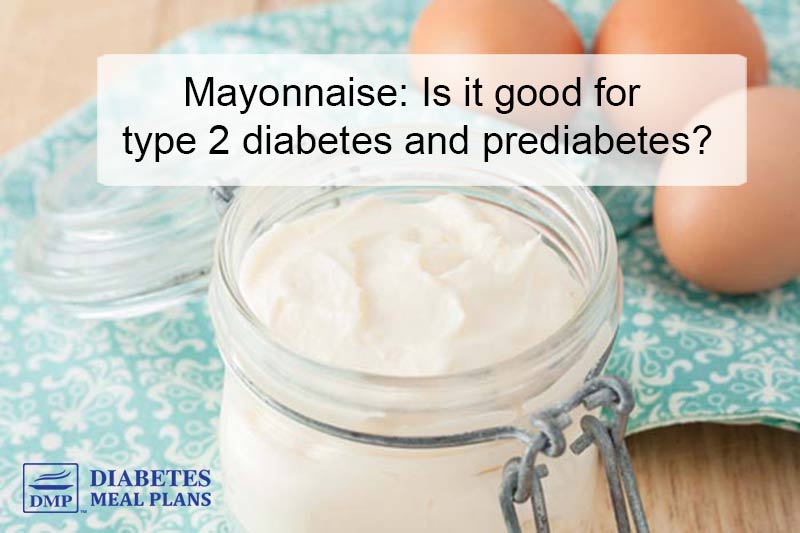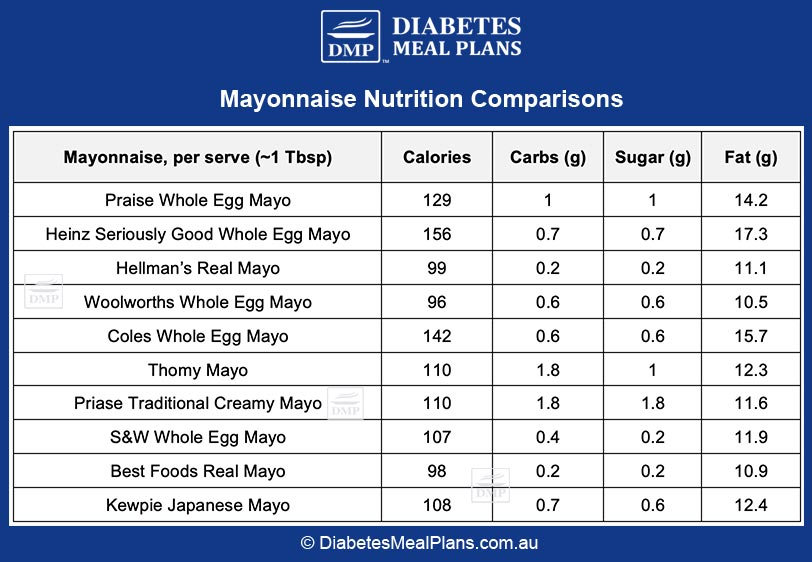Sometimes the best part of a meal isn’t the main course itself, but all the trimmings.
Think about a juicy hamburger. It wouldn’t be complete without a fresh slice of tomato, a few rings of onion, a leaf of lettuce…and let’s not forget the condiments!
Condiments like mayonnaise are what make food look and taste great, and we want to help you keep as many “yes” foods as possible in your menu while you transition to a healthier diabetes diet.
So if you’re looking for tips on how to find a clean, healthy mayonnaise look no further…

What is Mayonnaise?
Mayonnaise, shortened to mayo, is a creamy condiment that is popular all over the world. You can put it on a hamburger, mix it into a salad dressing, or use it as a tasty dip for your veggies.
While we often think of mayo as a simple spread for sandwiches, it’s actually a super versatile condiment that can be used in all kinds of creative ways around the kitchen.
The main ingredients in mayo are typically eggs and oil, which naturally makes it a very high-fat food. In fact, fat is the only macronutrient that mayonnaise contains!
Let’s take a closer look at that…
Mayonnaise Nutrition Facts
One tablespoon of generic mayonnaise contains the following:
- Calories: 90
- Carbohydrates: 0g
- Fibre: 0g
- Protein: 0g
- Fat: 10g
As previously mentioned, mayo is predominantly fat with only trace amounts of other macronutrients. There is little protein, fibre, or carbohydrates to be found, which may sound extremely “unbalanced,” but this doesn’t necessarily make mayo an unhealthy food.
For one, mayo should be used in addition to an already balanced meal—it makes a great creamy base for a salad dressing or a hearty egg salad. You’re (hopefully) not going to eat a bowl of just mayonnaise for dinner.
Secondly, it’s important to remember that high-fat foods aren’t inherently bad for you. Fats can be healthy or unhealthy depending on the source.
This leads us into a quick run-down on the difference between “healthy fats” and “unhealthy fats.”
Healthy fats like avocado oil, olive oil are rich in monounsaturated fats, which can improve your glycaemic control and lower your cholesterol levels (yes, you read that right…eating fat may lower your cholesterol!).
Foods like eggs and coconut oil are higher in saturated fat, but this is fine since they are whole foods that are nutrient dense.
However, not all fats are equal. The saturated fats in highly processed foods like ice cream, frozen pizza, and doughnuts are not so good for your heart or your waistline. The point being, saturated fat in whole unprocessed food is very different to those found in processed foods.
Finally, we have polyunsaturated fats like soybean, corn, peanut and vegetable oils. Polyunsaturated fats aren’t always bad for you but many of these oils are high in inflammatory omega-6 fats and they are highly processed. So it’s best to stay away from these.
Now that you know which fats to keep an eye on, let’s compare a few different kinds of mayonnaise.
Comparing Types of Mayonnaise
There are lots of mayos to choose from and as you can see, most are very low in carbs. Some of the exceptions are Praise and Thomy, which are a little higher in carbs as they contain more sugar – that’s why it’s always good to read the labels.
We prefer using the Hellman’s mayonnaise because it is made with canola, which is higher in monounsaturated fat compared to other oils like soybean, which are high in polyunsaturated-inflammatory omega-6 fat. Many mayos use soybean oil, which is a low quality inflammatory oil, another reason we like to avoid it.
Best Diabetic Mayonnaise Options At Coles & Woolworths
As we saw in the chart above, all mayonnaise is suitable in terms of carbohydrate content – they are all low in carbs. But when it comes to mayonnaise, the most important factor is the quality of the fat – since mayo is primarily fat.
Unless otherwise stated, you can get the below options from Coles and Woolworths.
GOOD QUALITY MAYO
- Undivided Good Fat Mayo Jar – Coles
- Hellmann’s Real Mayonnaise
- Best Foods Real Mayonnaise
- Birch & Waite Signature Whole Egg Mayonnaise
- Heinz Mayo Seriously Good Mayonnaise
- Coles Traditional Mayonnaise – Coles
- Coles Whole Egg Mayonnaise – Coles
- Your Condiment Co Whole Egg Mayonnaise – Woolies
LOW QUALITY MAYO
- Praise Traditional Mayonnaise
- Praise Whole Egg Mayonnaise
- Thomy Delikatess Mayonnaise
- Kewpie Mayonnaise
- S&W Real Whole Egg Mayonnaise
- Woolworths Whole Egg Mayonnaise – Woolies
- Woolworths Traditional Mayonnaise – Woolies
- Macro Organic Whole Egg Mayonnaise – Woolies
Conclusion: go for clean condiments
If you’re going to eat mayo then feel free to do so. All mayo’s are low in carbs and blood sugar friendly so you can purchase a jar at any store. But, you may want to seek out the ‘best’ option that includes healthier fats and clean ingredients!


